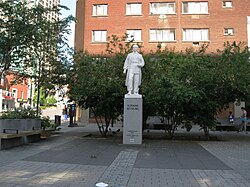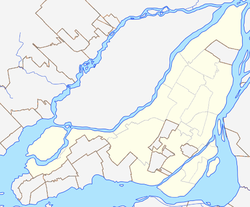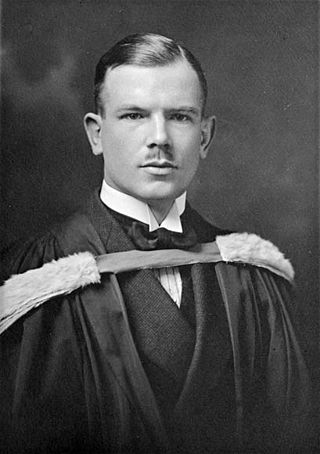
Henry Norman Bethune was a Canadian thoracic surgeon, early advocate of socialized medicine, and member of the Communist Party of Canada. Bethune came to international prominence first for his service as a frontline trauma surgeon supporting the Republican government during the Spanish Civil War, and later supporting the Chinese Communist Party's (CCP) Eighth Route Army during the Second Sino-Japanese War. Bethune helped bring modern medicine to rural China, treating both sick villagers and wounded soldiers.

The Mackenzie–Papineau Battalion or Mac-Paps were a battalion of Canadians who fought as part of the XV International Brigade on the Republican side in the Spanish Civil War in the late 1930s. Except for France, no other country had a greater proportion of its population volunteer in Spain as did Canada. The XV International Brigade, made up also of volunteer battalions from the United States and Britain, was involved in the Battle of Jarama, in which nine Canadians are known to have been killed.
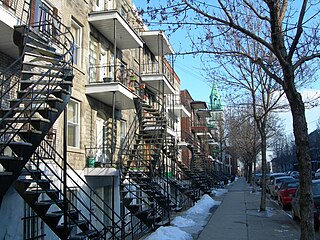
Hochelaga-Maisonneuve is a neighbourhood in Montreal, Canada, situated in the east end of the island, generally to the south of the city's Olympic Stadium and east of downtown.
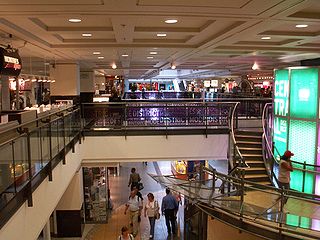
RÉSO, commonly referred to as the Underground City, is the name applied to a series of interconnected office towers, hotels, shopping centres, residential and commercial complexes, convention halls, universities and performing arts venues that form the heart of Montreal's central business district, colloquially referred to as Downtown Montreal. The name refers to the underground connections between the buildings that compose the network, in addition to the network's complete integration with the city's entirely underground rapid transit system, the Montreal Metro. Moreover, the first iteration of the Underground City was developed out of the open pit at the southern entrance to the Mount Royal Tunnel, where Place Ville Marie and Central Station stand today.

Frontenac station is a Montreal Metro station in the borough of Ville-Marie in Montreal, Quebec, Canada. It is operated by the Société de transport de Montréal (STM) and serves the Green Line. It is located at 2570 Ontario Street East in the Sainte-Marie neighbourhood, part of the Centre-Sud.

Guy–Concordia station is a Montreal Metro station in the borough of Ville-Marie in Montreal, Quebec, Canada. It is operated by the Société de transport de Montréal (STM) and serves the Green Line. The station opened on October 14, 1966, as part of the original network of the Metro. It has consistently been one of the network's busiest stations, ranking 5th from 2000 to 2001, 4th from 2002 to 2007, 3rd since 2008, and 2nd since 2021.

Ville-Marie is the name of a borough (arrondissement) in the centre of Montreal, Quebec. The borough is named after Fort Ville-Marie, the French settlement that would later become Montreal, which was located within the present-day borough. Old Montreal is a National Historic Site of Canada.

Sainte-Catherine Street is the primary commercial artery of Downtown Montreal, Quebec, Canada. It crosses the central business district from west to east, beginning at the corner of Claremont Avenue and de Maisonneuve Boulevard in Westmount, and ending at the Grace Dart Extended Care Centre by Assomption metro station, where it folds back into Notre-Dame Street. It also traverses Ville-Marie, passing just east of Viau in Mercier–Hochelaga-Maisonneuve. The street is 11.2 km long, and considered the backbone of Downtown Montreal.

Downtown Montreal is the central business district of Montreal, Quebec, Canada.

Bethune Memorial House, a National Historic Site of Canada in Gravenhurst, Ontario, Canada, commemorates the life and achievements of Dr. Norman Bethune. Impatient and restless, he was inspired by a sense of duty to others and a love of the outdoors. In Bethune, these characteristics were the seeds of a battlefront surgeon, communist, humanitarian, inventor, teacher and artist. The historic site explores the roots and examines his legacy. Dr. Bethune spent the last two years of his life in China, serving as a teacher and as a surgeon of the communist Eighth Route Army.

De Maisonneuve Boulevard is a major westbound boulevard located in downtown Montreal, Quebec, Canada. It is named after the founder of Montreal, Paul Chomedey de Maisonneuve. It is a one-way street westbound.

Shaughnessy Village is a neighbourhood of Montreal, Quebec, Canada, located on the western side of the Ville-Marie borough. It is bounded by Guy Street to the east, Atwater Street to the west, Sherbrooke Street to the north, and René Lévesque Boulevard and the Ville-Marie Expressway to the south.
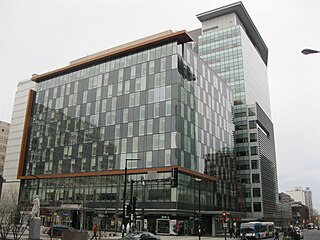
Quartier Concordia is a neighbourhood redevelopment project centred on Concordia University's Sir George Williams campus in downtown Montreal, Quebec, Canada. Bordered by Sherbrooke Street, Saint-Mathieu Street, René Lévesque Boulevard and Bishop Street, the district is designed to be a green urban campus that will improve the use and quality of public places and spaces, student life on campus and transportation.

Hazen Edward Sise was a Canadian architect, educator, and humanitarian.

Dorchester Square, originally Dominion Square, is a large urban square in downtown Montreal. Together with Place du Canada, the area is just over 21,000 m2 (230,000 sq ft) or 2.1 ha of manicured and protected urban parkland bordered by René Lévesque Boulevard to the south, Peel Street to the west, Metcalfe Street to the east and Dorchester Square Street to the north. The square is open to the public 24 hours a day and forms a focal point for pedestrian traffic in the city. Until the creation of Place du Canada in 1967, the name "Dominion Square" had been applied to the entire area.

Mackay Street is a street located in downtown Montreal, Quebec, Canada. Mackay Street is a one-way street, that begins at Sherbrooke Street West, travels southbound and ends at Overdale Avenue, just south of René Lévesque Boulevard.

The Communist Party of Quebec is a provincial political party in Quebec. It is affiliated with, but officially independent from, the Communist Party of Canada (CPC). The PCQ-PCC publishes the newspaper Clarté.

Bethune: The Making of a Hero is a 1990 biographical period drama film directed by Phillip Borsos. The film is about the life and death of Norman Bethune, a Canadian physician who served as a combat surgeon during the Chinese Civil War. The cast includes Donald Sutherland as Bethune, Helen Mirren as Frances Penny Bethune, Colm Feore as Chester Rice, and Anouk Aimée as Marie-France Coudaire.

Concordia University Library is the library system at Concordia University in Montreal, Quebec, Canada. Concordia University has three library locations. The R. Howard Webster Library is located in the J.W. McConnell Building on the Sir George Williams Campus and the Georges P. Vanier Library is located on the Loyola Campus. On September 2, 2014, the Library opened the Grey Nuns Reading Room, a silent study space for Concordia students located in the former Chapel of the Invention of the Holy Cross. The Reading Room has seating for 192 students, with an additional 42 chairs in small reading rooms. A Political Science student was the first to enter.

Bishop Court Apartments is a historic apartment building in Montreal, Quebec, Canada. It is located at 1463 Bishop Street, at the corner of De Maisonneuve Boulevard West in Downtown Montreal.
